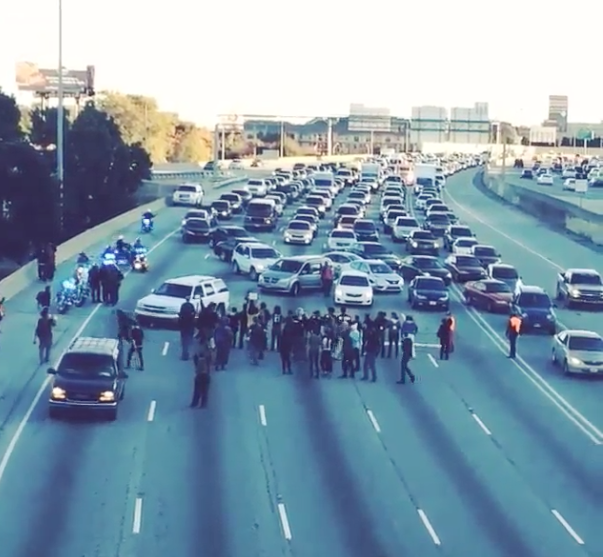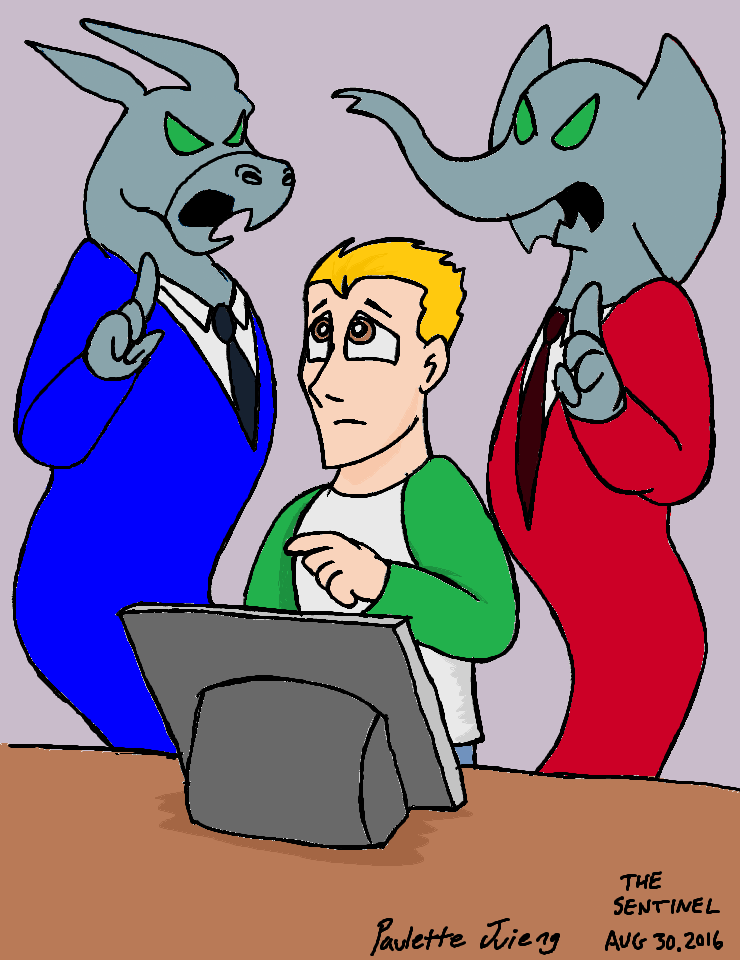Protesters blocked traffic on Interstate 75 and 85 Wednesday night in Atlanta as “part of a protest in response to the Aug. 9 fatal shooting of an 18-year-old African-American by a white police officer in Ferguson, Mo.,” according to the Atlanta Journal-Constitution.
I have no doubt that racism still exists in this country, and that militarized police forces and prejudice that leads to egregious violence against minorities is an issue that should concern all of us.
However, the irony of this movement is that its primary-fuel has been the shooting of Michael Brown—a name we are all very aware of by now. What’s baffling is that, out of all of the cases of white cop vs. black man that have proliferated in the media, such as the strangling of Eric Garner in New York or the prompt murder of an innocent man in an Ohio Wal-Mart, the Brown case is one where true evidence is increasingly in favor of officer Darren Wilson.
Dorian Johnson was the primary witness in the Brown shooting, claiming that Brown was viciously assaulted and that the two were minding their own business. Johnson, who pleaded guilty to lying to police in 2011, according to a report from Chris Hayes of Fox 2 Now in St. Louis, Mo., also accompanies Brown in the surveillance tape where Brown assaults a store clerk after failing to pay for goods he gathers in the store.
Yet the media took Johnson’s word for it and within a few days, the protests, looting and police brutality unfolded to paint a picture of civil unrest that’s beyond anything our generation has seen outside of history textbooks.
The epicenter of this movement—a justified movement—is in a town where it is becoming increasingly clear that the victim provoked the attack.
On Thursday, the St. Louis Post-Dispatch published Brown’s official autopsy report, indicating that Brown was shot at close range on the hand. This evidence defends Wilson’s account of what happened—that after approaching Brown in response to the robbery where Brown assaulted a storeowner, Brown assaulted Wilson.
According to the U.S. Supreme Court ruling in Tennessee vs. Garner in 1985, “deadly force…may not be used unless necessary to prevent the escape and the officer has probable cause to believe that the suspect poses a significant threat of death or serious bodily harm to the officer or others.”
An Oct. 23 report in Time Magazine highlighted that “a half-dozen unnamed black witnesses’ have provided testimony to the grand jury that supports Wilson’s version of events.”
Another element the media refuses to show is Brown’s multiple social media photos where he wields firearms, rolls of cash and identifies himself with gang signs.
It has taken over two months for the media to gather the facts, and there is still much to be determined. While facts, balanced, identify Brown as a criminal, the media has found a way to convince us the incident is simply the headline of an epidemic where innocent minorities are being gunned down on the streets. Is this true? Partially; because in fact, it does happen. But at the same time, the specifics of the Brown case don’t defend that.
Rather, nobody in the media is talking about John Crawford, an African-American male who was promptly murdered in a Beavercreek, Ohio Wal-Mart because he was holding an air rifle sold in the store. After distressed customers profiled him as a threat, police ran into the store and shot him to death before he could move a muscle. A Washington Post story from Radley Balko, published Sept. 25, shows the entire event through surveillance.
At one end, we have surveillance video of a man robbing a store clerk. On the other, we have evidence of clear prejudice and murder. Guess which one is now a household name?
It’s not that we shouldn’t be protesting police brutality. We absolutely should.
But how telling is it that Michael Brown is a household name, while John Crawford and Eric Garner are not?
We are absolutely letting an irresponsible avenue of media dictate where our outrage lies, and it’s ultimately leading us down the wrong path.
Because of the Michael Brown incident, protestors in Atlanta lined up to block traffic to protest—the Atlanta Police Department?
Should we protest police brutality? Absolutely: but only when we’ve gathered all of the facts should we assemble our pitchforks and torches.






44,000 People in Beavercreek, OH
88.5% White
2.5% Black
21,000 People in Ferguson, MO
67.4% Black
29.3% White
I live in the County that John Crawford was killed in…..we need NATIONAL HELP OUT HERE. Thank You Michael for paying attention